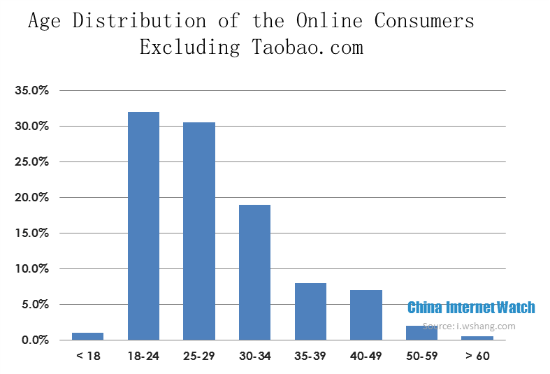
These data has the extremely high reference value from e-commerce sites Alipay supported excluding Taobao in 2012.
The population characteristics of online shopping customers
1. For the age, young people were the key group
Online shopping customers under 30 years old were more than 60%, the customers who were over 40 years old were about 10% in the e-commerce sites excluding Taobao, which indicates that the online shopping users are younger.
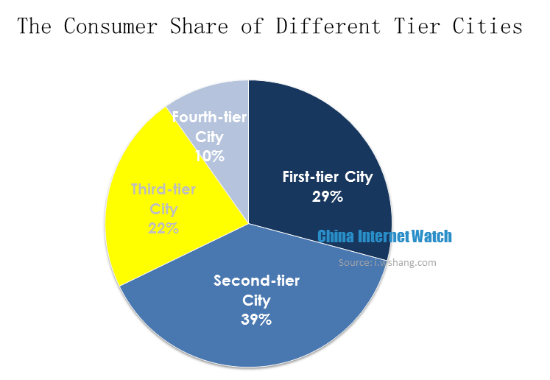
2. From the customers’ regional distribution, the online shopping was popular to third and fourth tier cities.
The customers of e-commerce sites excluding Taobao mainly distributed in first or second tier cities, ratio to 67.9%. And the annual statement from alipay showed online payment customers of fourth tier cities increased to 64% and online payment amount increased to 68% in 2012, of which all overtook the first and second tier cities. The online shopping was popularizing from developed regions to the less developed regions step by step. The development speed of small cities should not be ignored.
The Guangdong province had most customers of e-commerce sites excluding Taobao, followed by Shanghai, Jiangsu, Zhejiang and Beijing. Based on the data from CNNIC, the absolute value of Shanghai netizen population ranted 13 in the whole country in 2012. Balance of the alipay data, the permeability of online shopping in Shanghai was very high. The online shopping customers of the first five provinces were more than 50%, the customers of the first ten provinces were about 70%, which showed the regional concentration was pretty high.
The behaviors of online shopping customers
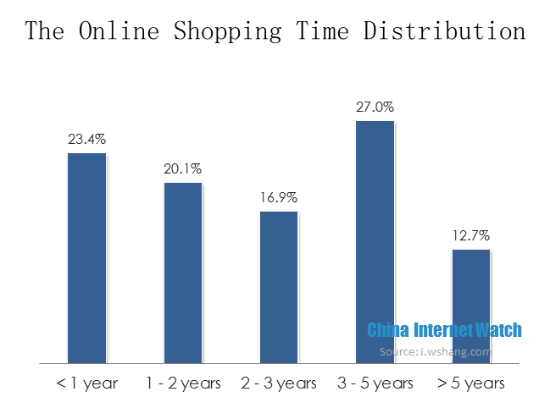
1. The online shopping age distribution: 40% customers’ online shopping age was under 2 years. The new online customers whose online shopping age was under 1 year reached 23.4%.
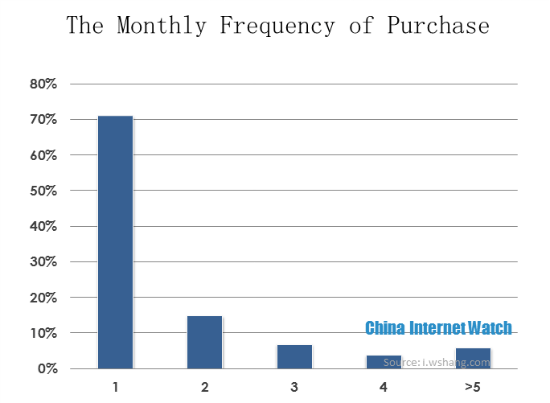
2. Shopping frequency: most online customers shop online just one time every month
70% customers of e-commerce sites excluding Taobao were shopping online just one time every month. The customers who were shopping more than three times every month were less than 15%. It’s very important for e-commerces to increase online shopping activities.
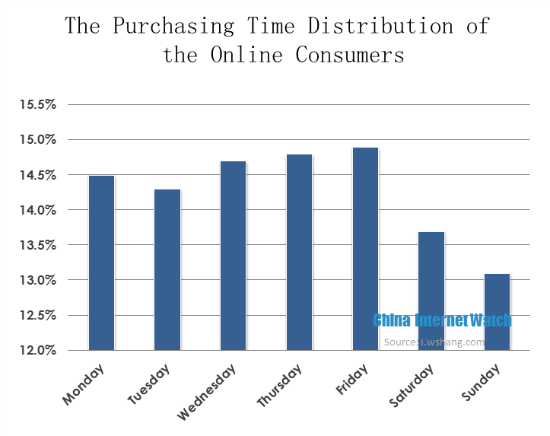
3. The time distribution in online shopping: the customers’ enthusiasm was higher on working day in online shopping
The customers’ enthusiasm was higher on working day in online shopping, while the online shopping customers significantly reduced on weekend. The customers could arrange their time freely and went shopping in mall on weekends or holidays. However, on working days, the customers did not have much time to go shopping outside, so they preferred to choosing convenient online shopping.
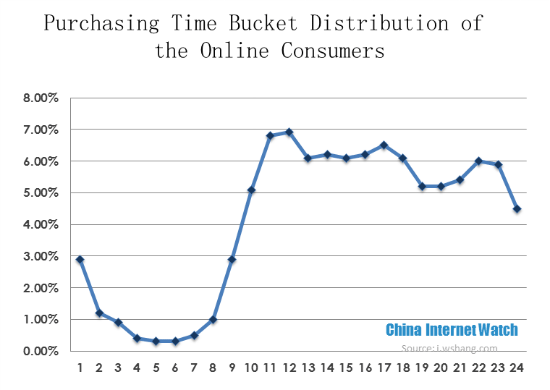
The time of customer in online shopping is consistant with the work and rest time. The period of online shopping mainly focused on working hours and rest time at home. The customers prefer shopping online when working than at home time. The customers’ passion was a little low during rush hour and mealtimes. The sellers could adjust the strategies to content the customers’ shopping requirements according to the time distribution in online shopping.
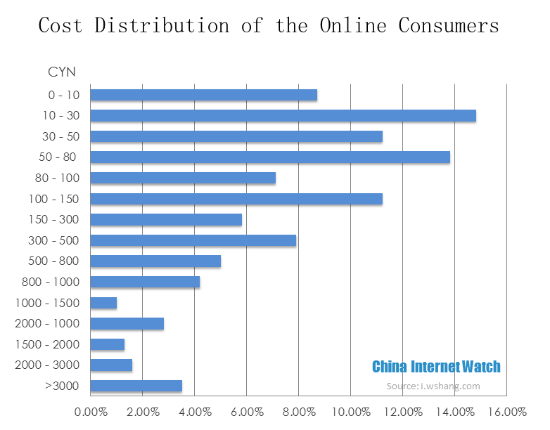
4. The unit price distribution of customers: the unit price of over 70% customers in online shopping was under 200 RMB.
The customers who spent more than 1000 RMB one time in e-commerce sites excluding Taobao were about 9%, while 70% customers spent under 200 RMB. So the major customers preferred cheep goods in online shopping at present.
5. Shopping preferences: costumes and jewelry category are the all people’s favorite
What the customers loved to buy were costumes and jewelry. The household products were the third category which females loved to buy, the fifth category which males loved to buy. It showed females loved buying household more than males. 3C digital products were the third category females loved to buy, the fourth category males loved to buy. It showed males loved digital products compare with females.
The top two shopping preferences at all ages were costumes and jewelry, while the top five shopping preferences showed some difference with customers’ age increase. For example, the household products were the fifth favor of the customers under 24 years old, while from 25 years old the household products were up to the third; the maternal and child supplies became one of the top five favor of the customers aged 30 to 39. The data showed the major online shopping people chose late marriage and late childbearing. The customers who were over 60 years old prefer to buying foods online. The shopping preferences of foods were the top five. Buying foods online is convenient for the elderly people who did not move.